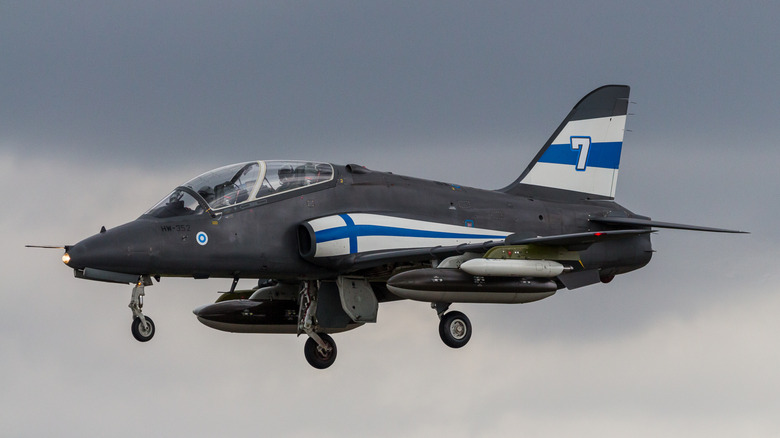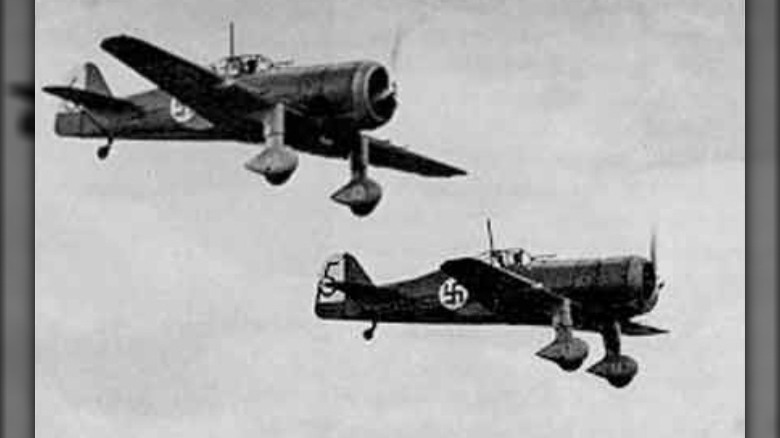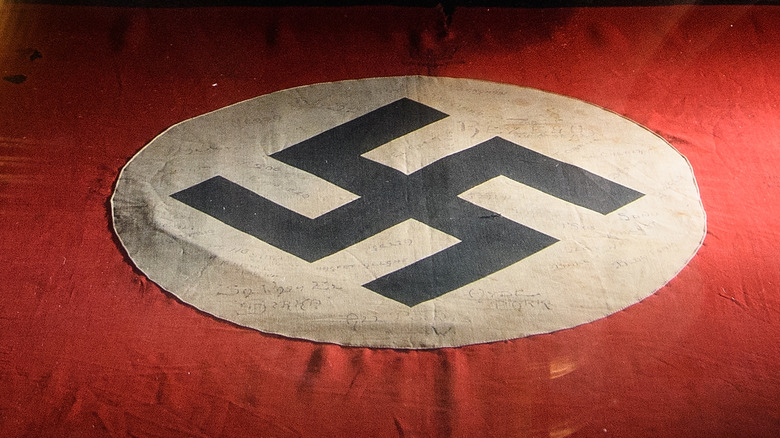The Truth Behind Why The Finnish Air Force's Flag Featured A Swastika For Decades
There are few icons amongst the vast spectrum of symbology that elicit more distasteful and unsavory emotions than the swastika. It was in 1920 that Adolf Hitler applied the timeless symbol that, up until that point, historically denoted positivity and good luck, as BBC News reports. It then became the official sigil of the Nazi party that infamously sought to dominate the world at large through malicious force, unchecked brutality, and rampant genocide. As we all know, that diabolical prospect thankfully never fully came to fruition (via History).
However, the distasteful connotations that the Nazi party attached to the timeless insignia of the swastika weren't always there. Before the rise of Hitler and his tyrannical regime, the Finnish Air Force featured the emblem on its official flag. However, over the years, the stigma became far too cumbersome to bear, prompting the government of Finland to discard its use of the swastika entirely (per BBC).
The Finnish Air Force's use of the swastika
According to DW, the Finnish Air Force first adopted the swastika in 1918; two years before Adolf Hitler made it a symbol for his anti-Semitic regime. It was Count Eric von Rosen, a Swedish nobleman, who presented the Finnish military sect with a plane that sported the icon on its side. At the time, the swastika still carried an immaculate denotation and was a symbol for luck and well-being, so the gesture was actually a wholesome one.
In retrospect, the Finnish Air Force actually had a superior claim to the swastika, but in the aftermath of World War II and the Holocaust, pressure to remove it from its flag started to mount. It wasn't until 2017 that it finally decided that it was time to choose a different representation for its department. Von Rosen's later associations with the Nazi party through his brother-in-law, who was said to be a personal friend of Hitler's, certainly provided additional prompting. Finnish planes now sport a golden eagle encircled by wings, which is naturally far less controversial than its previous logo (via DW).
History of the swastika
Britannica reports that the swastika originally represented fertility, health, good luck, and well-being. "Svastika," a Sanskrit term that inspired the common use of the word, means "conducive to well-being." All throughout history, various cultures and religions (including Christianity, Hinduism, Buddhism, and Jainism) have utilized the swastika and sported it as a symbol of positivity, but all prior associations with it became virtually obsolete after Hitler usurped it in 1920 to symbolize his treacherous ideology.
If the swastika appears today, it's generally meant to promote sentiment toward Hitler's cause and anti-Semitic messages. Naturally, given the current political climate, Finland opted to sever any and all possible connections with Nazism or paradigms of hate. "As unit emblems are worn on uniform, it was considered impractical and unnecessary to continue using the old unit emblem, which had caused misunderstandings from time to time," a spokesperson for the Finnish Air Force shared following the switch (via BBC News).


